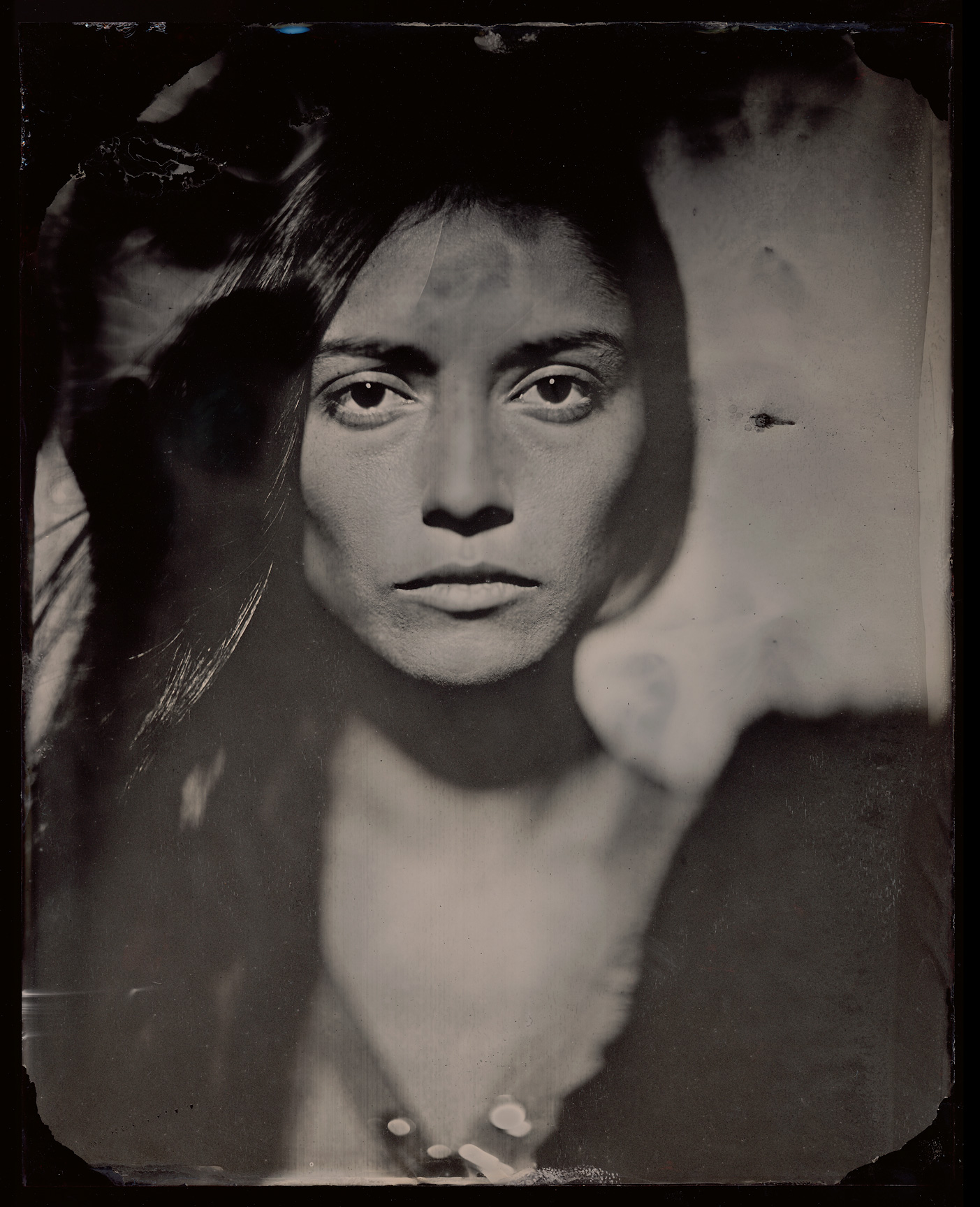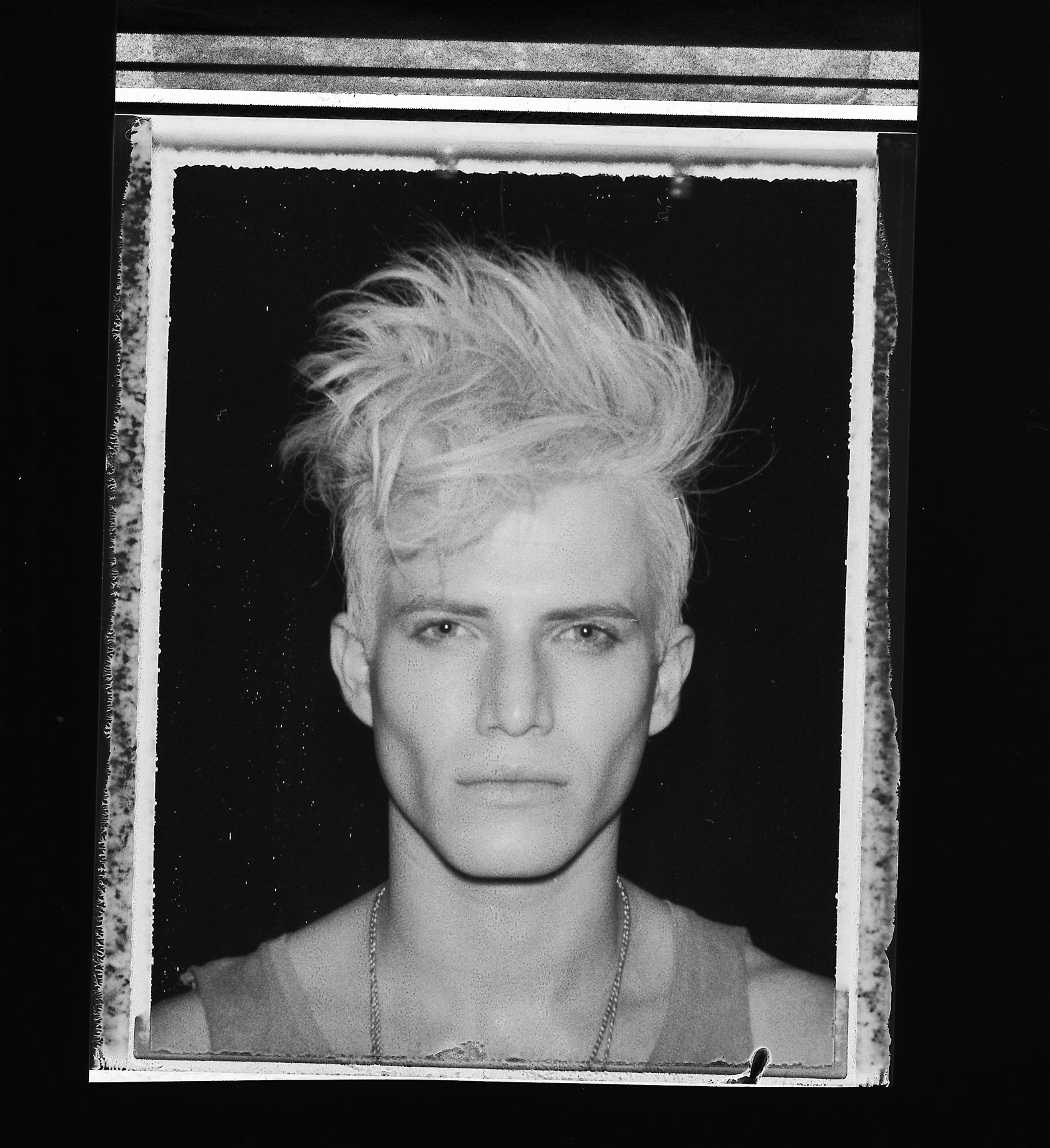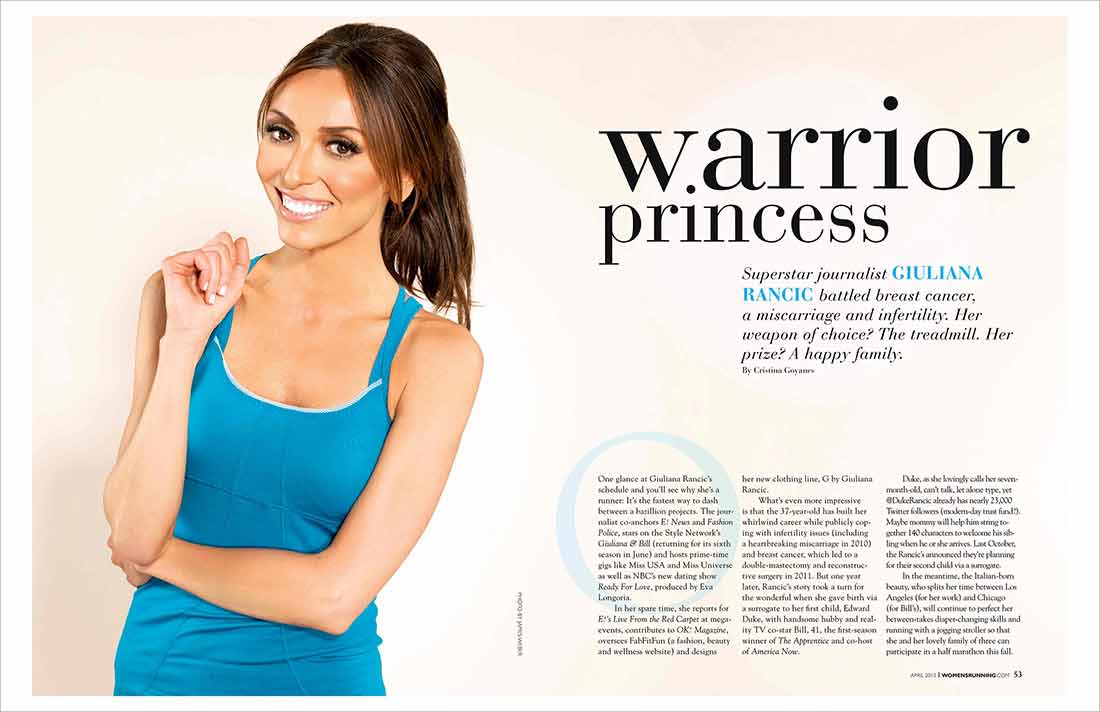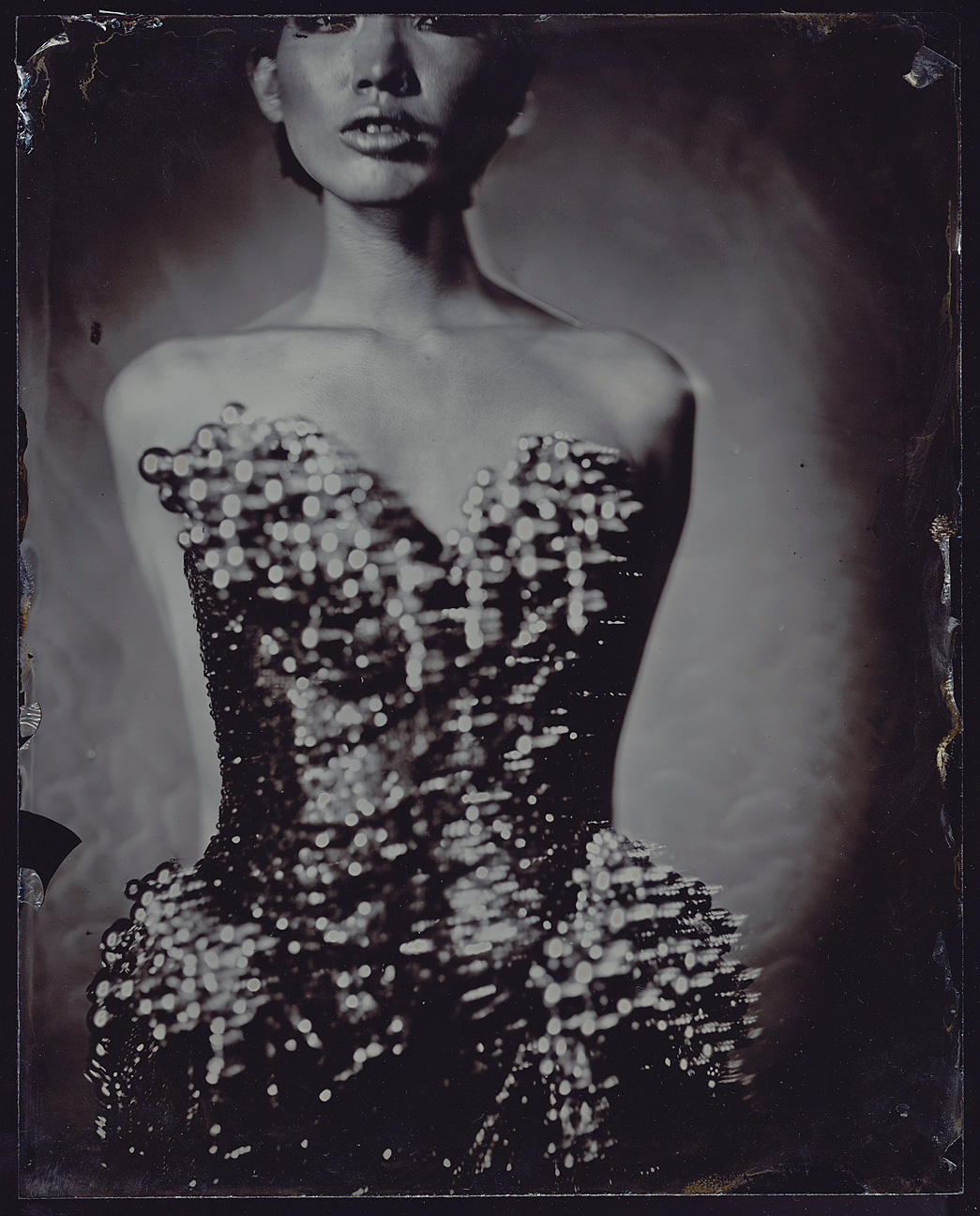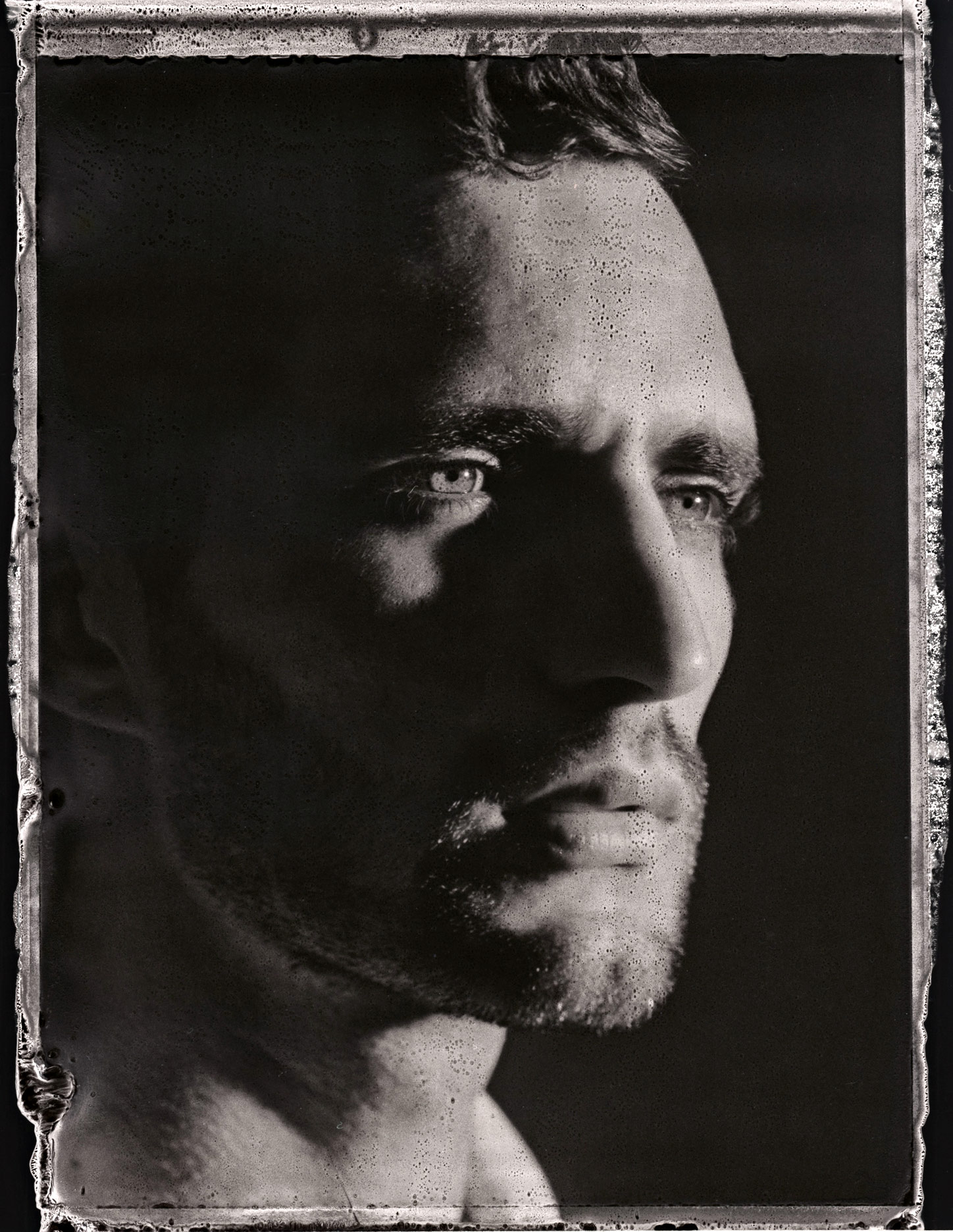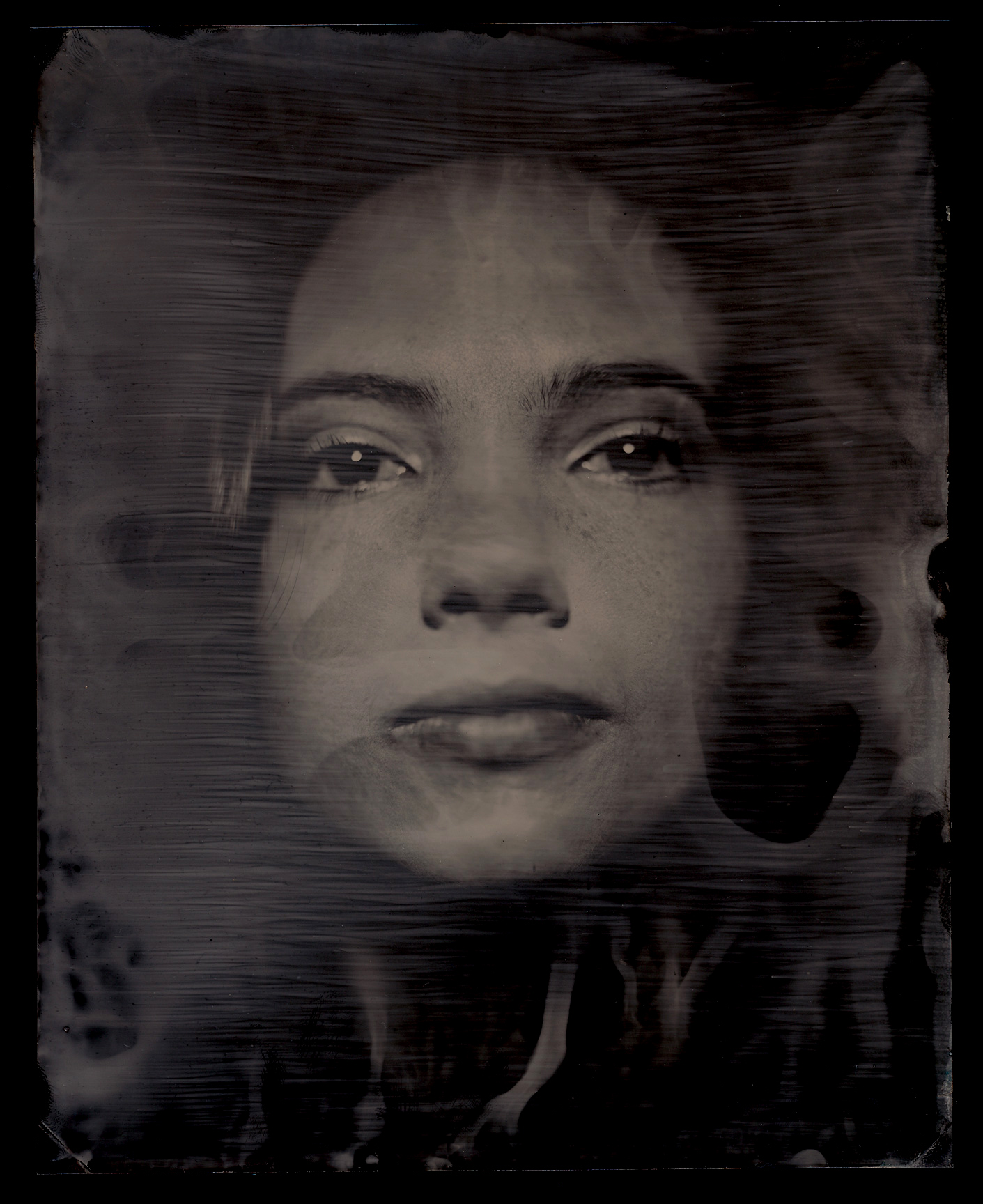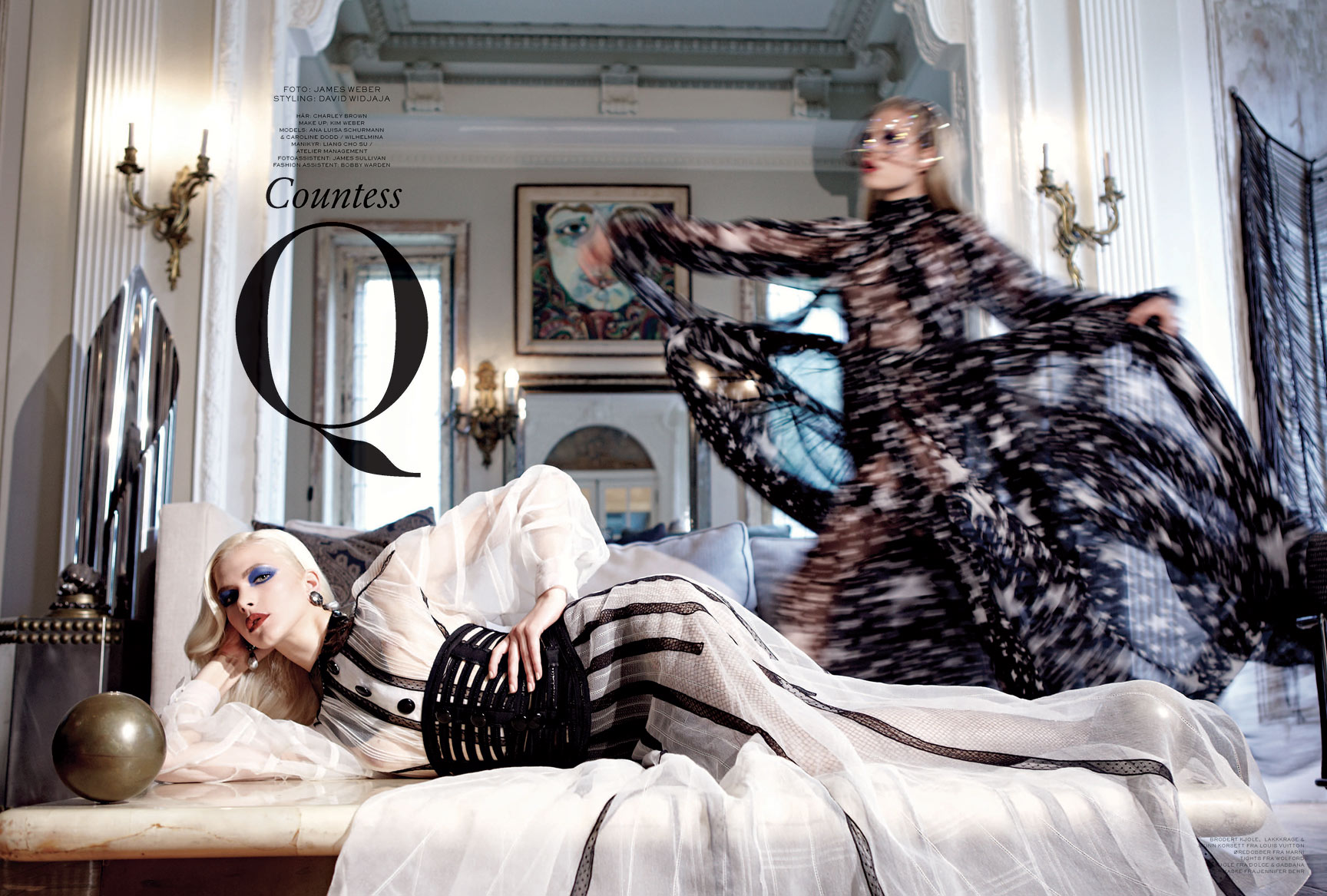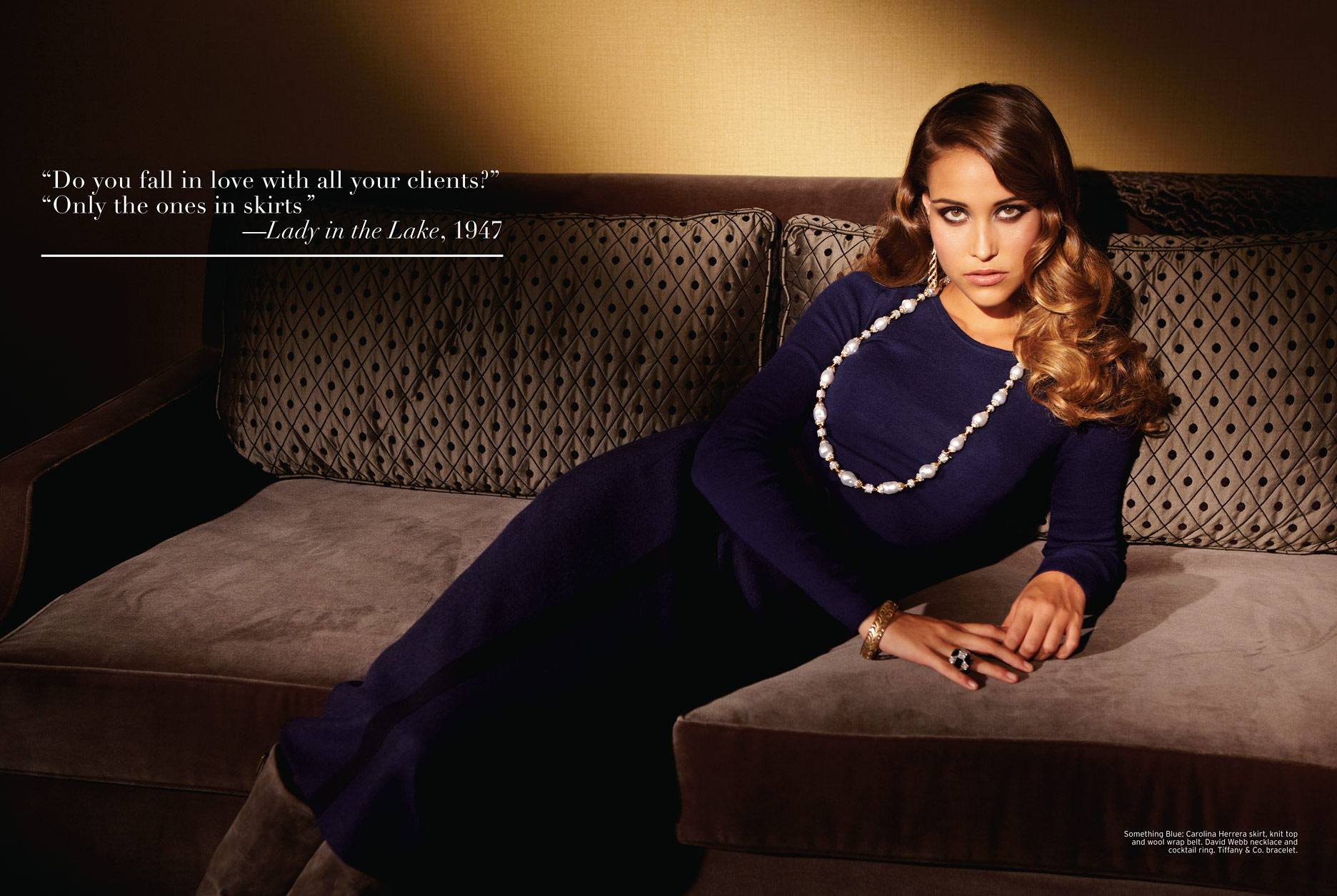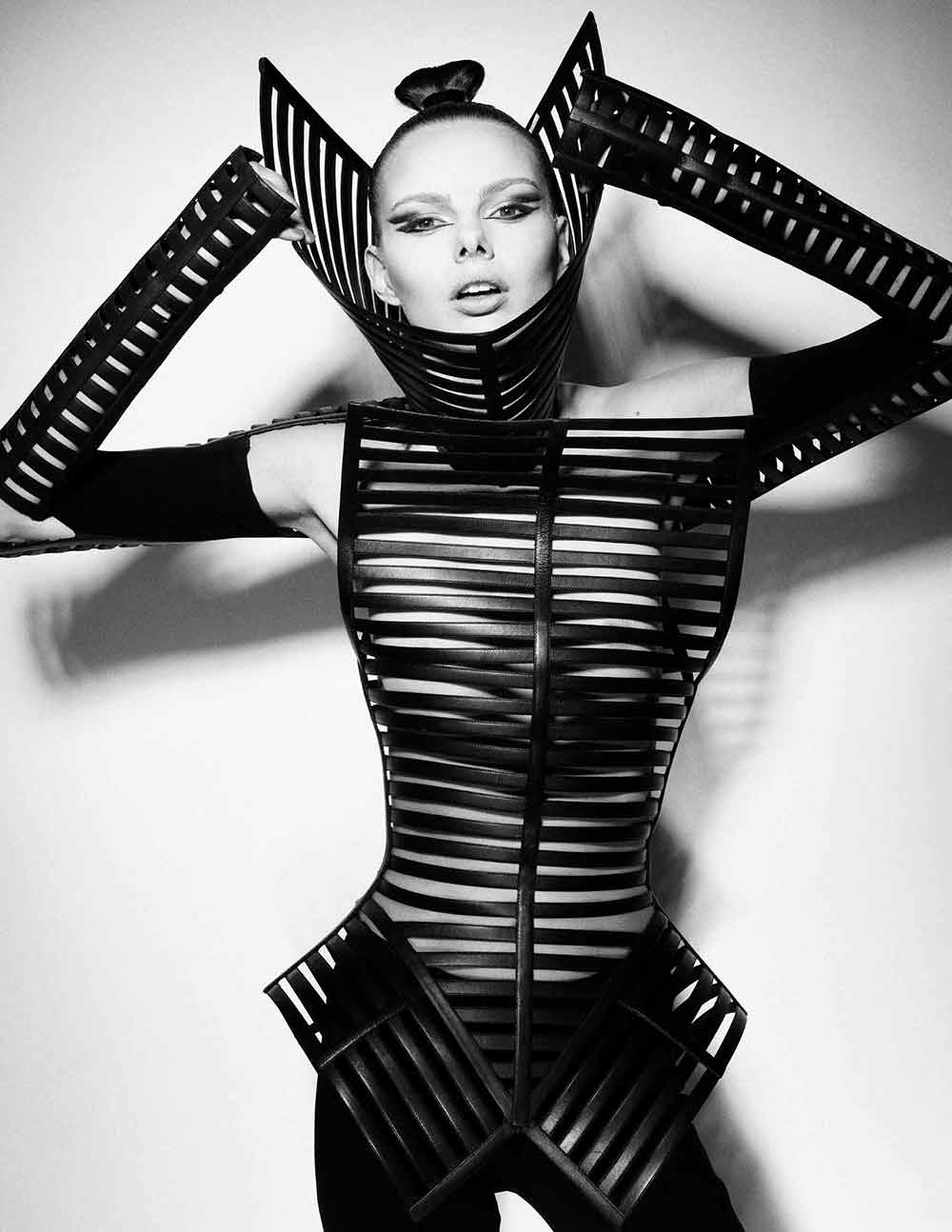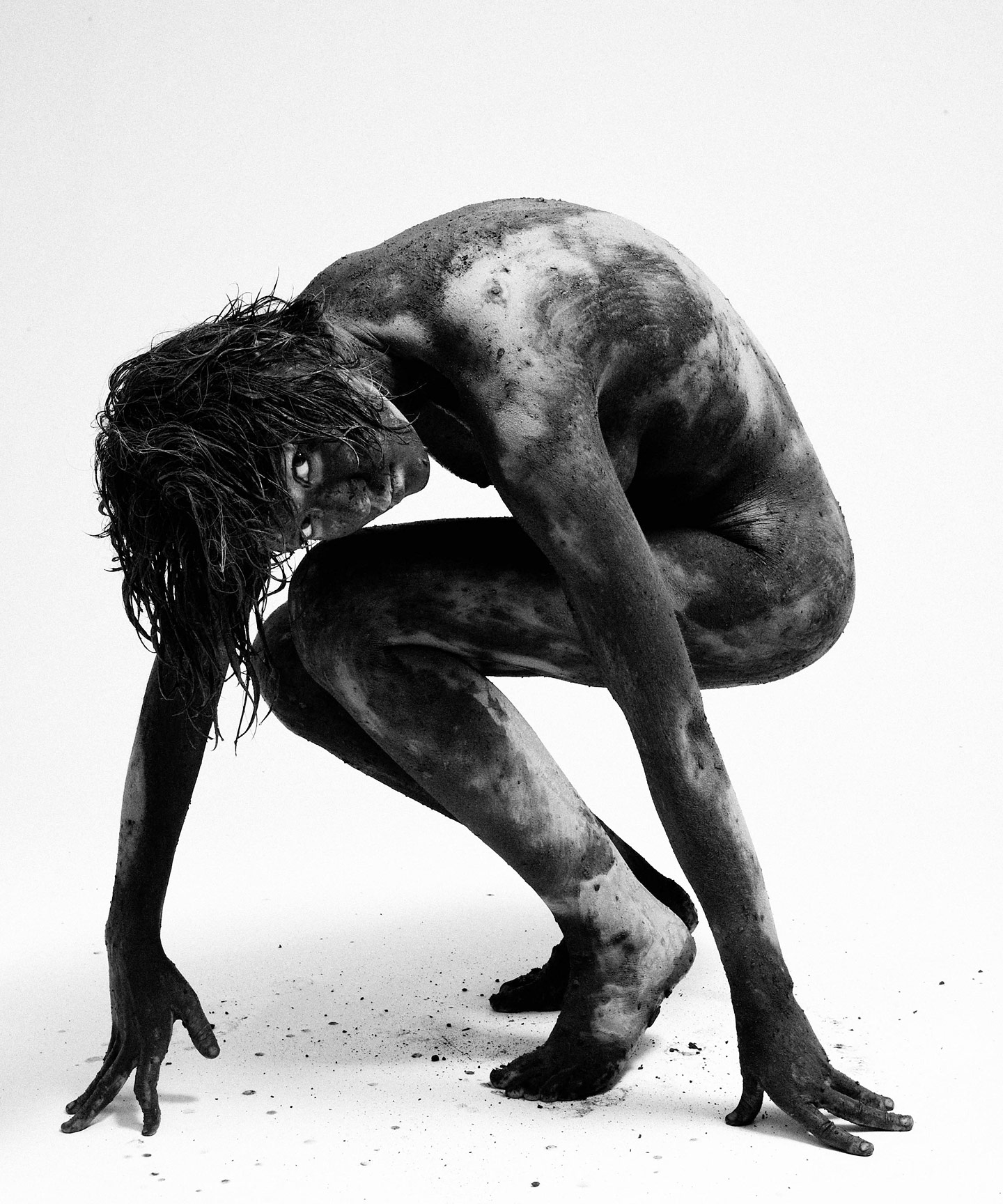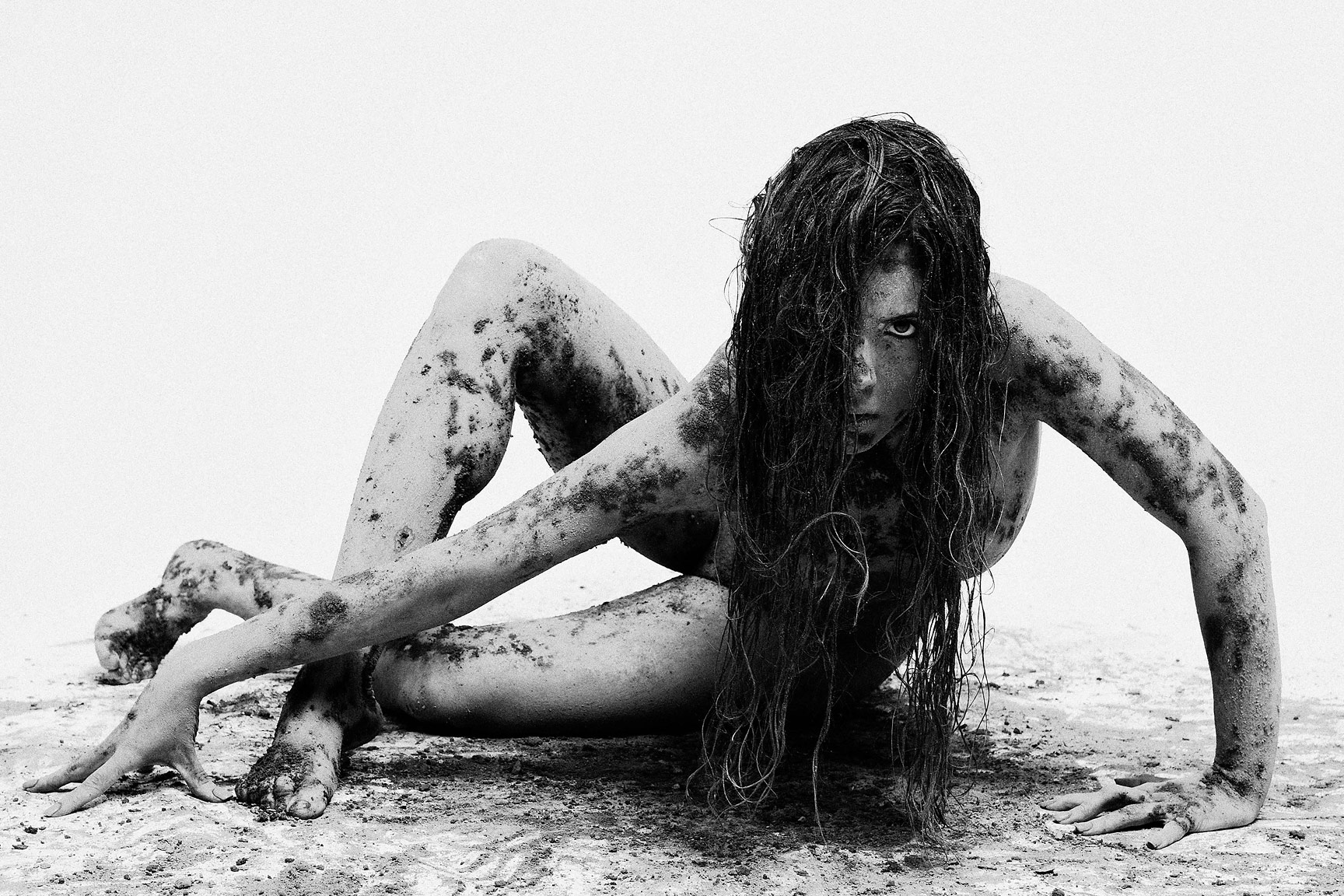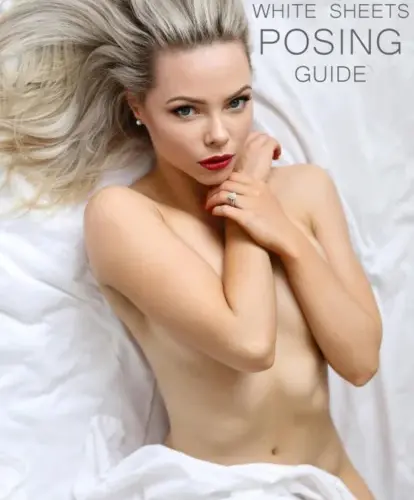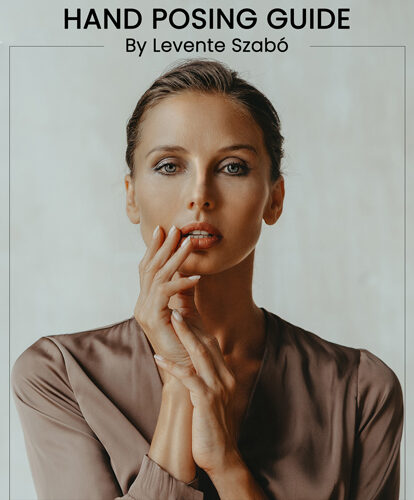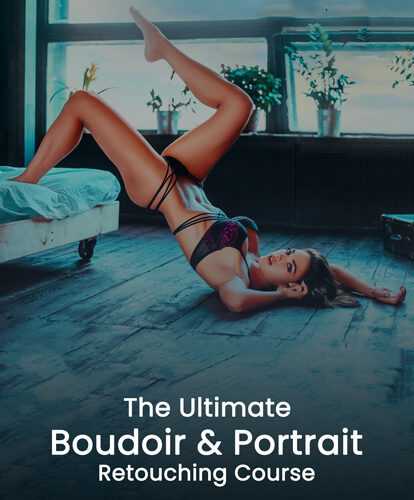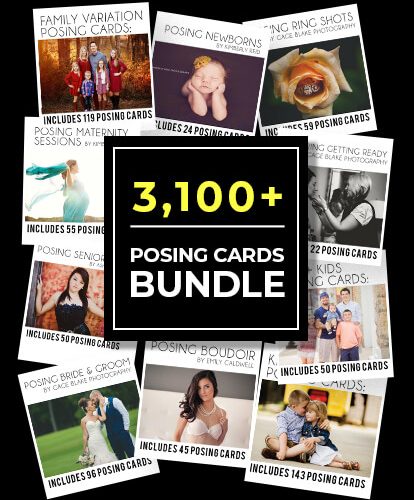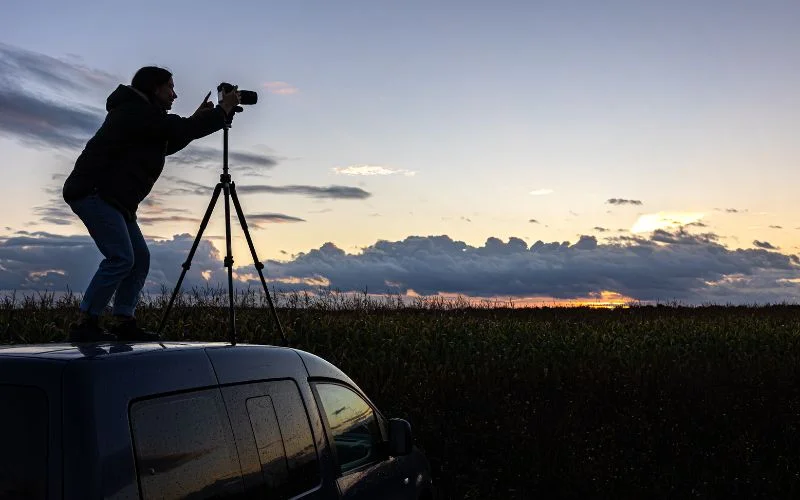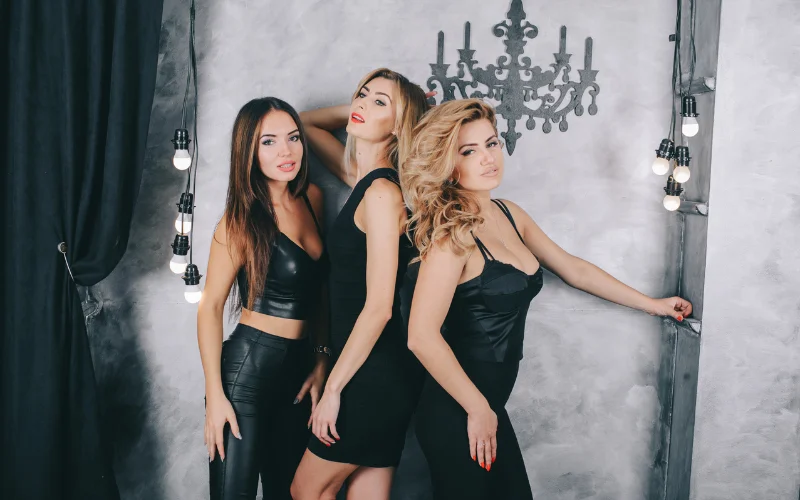It is hard to classify New York photographer James Weber. James Weber is not strictly fine art–though he still works with 19th century wet collodion based cameras–and can’t be described as solely into fashion/beauty even though he’s worked with Ralph Lauren, Elle and Tommy Hilfiger. One thing is clear, however, and that is the careful grace found in the images of James Weber.
Unlike many other photographers, James Weber got his start in the Navy, where he worked for 6 years. Being stationed in Japan then Hawaii, he had the opportunity to work with many types of film and genres of photography, including aerial photography (imagine Apocalypse Now-type helicopter shots). This experience helped solidify his craft and steer him toward the wet plate cameras James Weber experiments with now.
In this interview, James Weber talks in-depth about why he chooses to continue working with wet plate collodion cameras, how this process affects the ‘soul’ of a photograph, and why it’s never wise to lose yourself in digital technology.
You have worked in almost all genres of photography, ranging from fine art to celebrity. How did you get your start in photography and which genres do you enjoy the most?
I got my start in photography in a little different way than most. Like many photographers, it started with a black and white course in college that went from an elective to something that changed the course of my life. After I finished the black and white 101 in college, I decided to make a leap and joined the U.S. Navy to become a photographer. I went to the Defense Photography School and was then shipped out to Misawa, Japan for my first duty station. It was there that I mentored under some of the other older, more experienced photographers. I did 3 years in Misawa and then 3 years in Oahu, Hawaii before I decided to get out. During those years, I shot a wide range of things from Aerial photography during my work time and more landscape type work during my hiking expeditions in Japan and Hawaii. During all of these years, it was all black & white and color film. We had a $35,000 film budget, so I got to play with all kinds of films from IR to high speed. I also got to use the military’s darkroom and printing facilities, which was great as it provided the background in chemical processes that I use so much now. While I didn’t “assist” in the traditional form, as we know it now, my mentor in Japan taught me so much. If you have the chance to assist someone you admire, do it. You’ll learn so much more than any traditional school can ever teach you.
As far as genres of photography, I love many for different reasons. Fashion and beauty are great as I get to work with fabulous teams of hair, makeup, and styling to create something beautiful where once there was nothing. I also enjoy shooting portraiture for the intimacy you create between yourself and your subject. Lastly, shooting landscapes and scenic imagery is nice as usually it’s just you and the camera. The next project that I’m planning now is going to marry my portrait work with my landscape work using a Giant Wet Plate camera that I built.
(Editor’s Note –You can see more about the camera here.)
You have shot some fashion editorials using a wet plate camera (top). Could you explain how using the wet plate process affected the final look and feel of the images?
Shooting the wet plate collodion process has been one of the most rewarding experiences I’ve ever had in photography. It seamlessly engages both the science and the art of photography. You need both to do it successfully. Part of the joy of wet plate is getting your hands dirty (sometimes literally) and getting back in the darkroom. Seeing the images come up in the developer and appear in the fixer is one of those things you’ll never tire of. The look of wet plate is also like no other. Because you have a range of chemical processes involved, each plate you shoot and develop is always going to be unique. Whether it’s the edge detail, or the famous, “artifacts”, or anything that you didn’t quite plan on being there, it’s a wonderful form of photography. It was used heavily during the civil war and after, roughly 1853-1890’s . . . then dry plate when out. As far as the “feeling” you get, the images look timeless and also very personal. You end up spending more time with your subject setting up the shot and getting everything ready, so I believe you take more time and care with each image, and it shows in the final result. The portraits I shoot look very soulful because wet plate forces you to slow down the process and take more time with your subject to get each shot. I think that’s something that we’ve gotten away from with the ease of digital now.
Do you have any tips to other photographers who might want to experiment with it as well?
I would say that for anyone that used to enjoy the darkroom or likes to make beautiful handcrafted images on glass or metal, it’s a wonderful art form: getting back to the basics of photography. Using large-format cameras, tilt, shift, push and pull focus . . . it’s fun. It’s also nice to show your subjects the process. Everyone is always really engaged in helping you make the best images possible because it’s a unique process that most people have never seen before. The experience of shooting wet plate is just as enjoyable as seeing the final image.
And there is a huge amount of information available on wet plate now, so my first piece of advice is to go to Vimeo and Youtube and search around to see what it’s all about. There are a lot of photographers doing videos of their work, so you should see what the process is all about to see if it’s something you’re into. It can get expensive as the cost of chemistry, materials, and cameras can add up, but in my opinion, it’s completely worth it. I’m planning a cross country trip right now that will take me from New York to California using a giant wet plate camera that I built (Ed. Note: See here). I’ll have more information on my facebook site, Collodion Gallerie. I created that page so that anyone that wanted to follow my wet plate work can go there. I’m also setting up wet plate workshops so that New Yorkers have a place in the city where they can go to learn the process. You just need to like the page to get updates on the trip and classes.
You have also worked on many commercial projects. How did you secure your first commercial shoot and what advice would you give to someone who’s trying to break into commercial photography?
Well, I consider commercial photography to be fairly broad. I think anytime someone is paying you to do a shoot, it’s commercial. My advice is to shoot imagery that you love, so that when you get paid to shoot you’re getting paid to do what you love to do. Whether it’s fashion, portraits, still life, advertising, another important thing for photographers to do is continue to create and shoot your own projects. Many times they are self-funded, but I think some of the best work I’ve made has been from my own self-funded projects. There’s no art director sitting over your shoulder telling you what to do. You’re shooting something of your own, or your own team’s vision.
As for how I secured my first commercial shoot, it is as I said above. I continued to shoot in the categories that I wanted to work and eventually, if the work is good, you will start to get hired for it. It just takes time and a little marketing/networking. Like any field, the more you put into your own work, the more the return will be. Don’t get complacent, keep shooting, and keep building your book. Try as best you can to evaluate your portfolio, removing the weaker images and replacing them with stronger ones. That process will never really end. The day you stop shooting for yourself is the day you should retire.
What do you think clients look for when evaluating whom to hire for a commercial shoot?
What clients are looking for are two things. One, they need to see a visual style that goes through all of your work. It may take some time, but it will eventually come to pass if you shoot enough. Another equally important thing is consistency. They’re not looking for that fantastic, “one-off” that you did. They want to see a whole portfolio of the kind of work they’re looking to do. It can be as little as 10 images, or as many as 50-60. It all depends on how strong your images are. In the end, 15 strong images are better than 15 strong + 15 mediocre. So edit yourself well.
Your blog is filled many interesting and novel fashion/beauty projects. How do you come up with all these ideas?
Some of the ideas spring from my mind based on my own experiences, and some are collaboration with the many talented artists I work with all the time. This is where having a great team is important. I’ve been working with many of my hair stylists, makeup artists, and wardrobe stylists for years. Many times, one of us will have the beginnings of an idea, and we get together and work it out together. Sometimes they are driven by the publications editorial calendar; sometimes we follow our own leads. Use what is around you and what you know. If you do one thing, try to build a good team around you if you’re getting into fashion or beauty. Working with them long term makes it like a family. This also helps when you get paid work as the clients see that there is a nice familiarity to the way the team works together. The day is more fun and the work is always better for it.
Your fine art photography includes a series entitled “The Evolution Project”. In it, you photograph your models covered with dirt and mud. Could you explain how you came up that concept and your aim with it?
It all started out on a rooftop in DUMBO at a friend’s place. It had just rained, and I was up on the roof. He had a charcoal grill that had been left open and rained in. It had a slushy mix of charcoal and water inside it. I stuck my hand in it, and it came back black with the stuff. It had a nice texture to it, and I immediately thought this would be great for a nude series. The reason I called it, “The Evolution Project” is I thought my subjects looked very primal in nature when fully covered in it. I wanted them to act and feel animalistic, as if they were back in the early days of the evolution of man. Mankind as a species is at heart a very primal, sometimes violent species. I wanted to capture some of that raw, primal essence in the series. I gave the models some direction to begin along with what I wanted in general and let their “Inner Beast” come out. Like any art project, they take time. I shot that for about 5 years on and off. The gallery show is still some ways off as now I’m off shooting the wet plate series now.
Fashion and beauty photography is very competitive and constantly innovating. What would you consider the three best ways to set oneself apart?
The most important thing I covered above. Get yourself a truly great team. That’s the most important part. All I can say is follow your own path, not the path of someone else. What might be right for me or someone else may not be right for you. Be technically good as well as creative. Don’t rely on technology to save the day. It all starts in the camera. The beauty of what we do is we create something where nothing once was. At the end of the day, we’ve created a fantasy world of beautiful imagery. The fact that there are no boundaries is the greatest asset we have. There really are no hard and fast rules. Have fun with your work and it will show. Be good at what you do and great team members will find and want to work with you.
The model is hugely important in fashion and beauty. Take my advice and take the time to do an in-person casting if you can. As many of you have already experienced, sometimes you can get some not-so-nice surprises when you cast solely from online portfolios. If you see them in person, you also can gauge what kind of personality they may have. Depending on what you’re doing, this could be very important.
Lastly, a note from someone that grew up in the film era and has embraced all analogue photography. Try to get what you want to do as much as you can IN CAMERA. Filters, Photoshop, retouching, etc, should be enhancements to what you do, but not BE what you do. Be careful you don’t lose yourself in the technology. Get back to the basics of great photography, a compelling subject, great lighting, composition, and any enhancements will be just that . . . enhancements. Good luck and most importantly, shoot what you love.
The name James Weber comes with a legacy of it’s own. A life filled with highs and lows James Weber has had his share of experiences that shine through his art.
You can find the work of James Weber on the following sites:
www.jamesweberstudio.com – His main portfolio site
www.jamesweberstudio.com/blog – Lots of behind the scenes on his blog
www.collodiongallerie.com – Website of his wet plate collodion work
Collodion Gallerie on Facebook
James Weber Studio on Facebook

